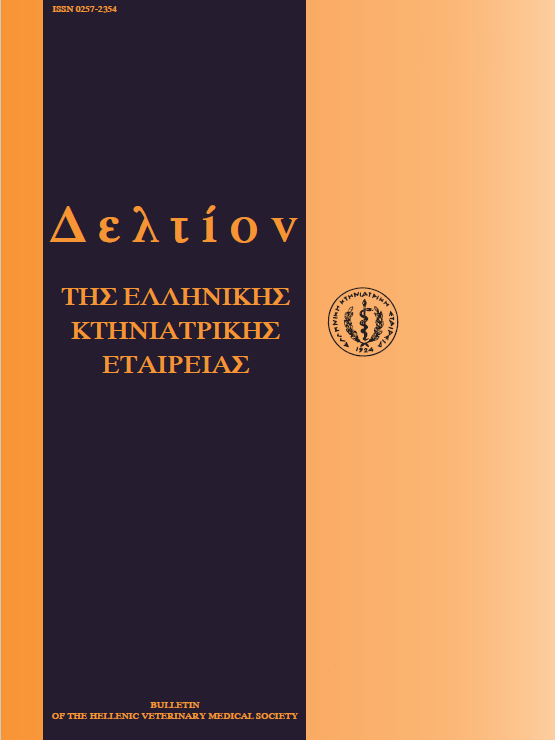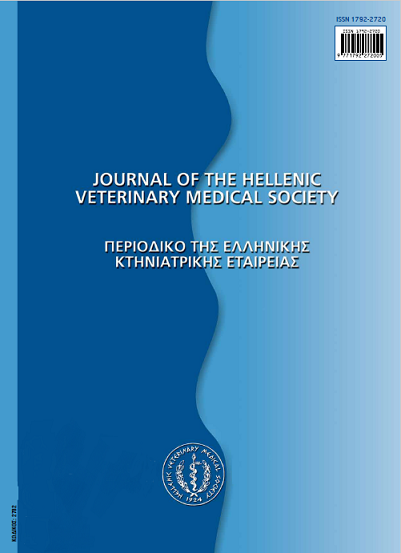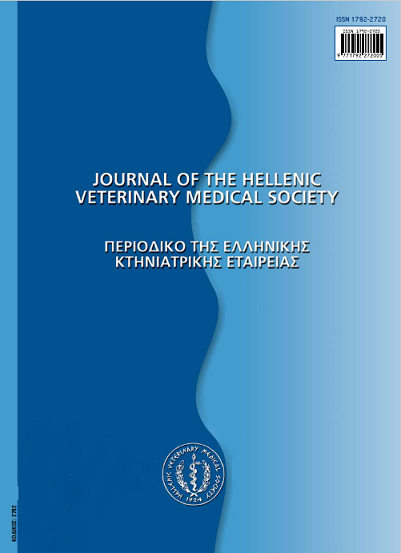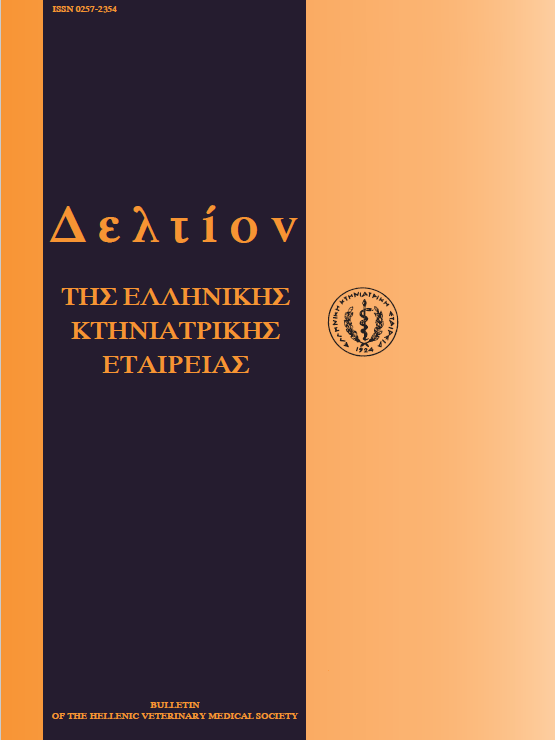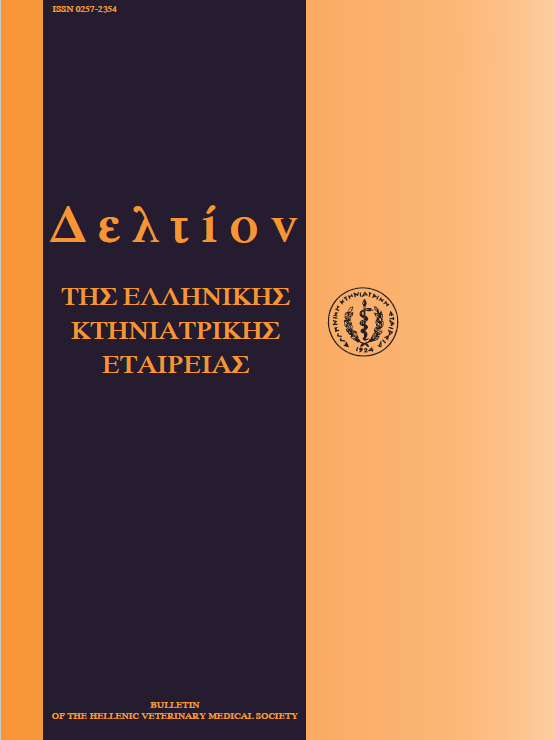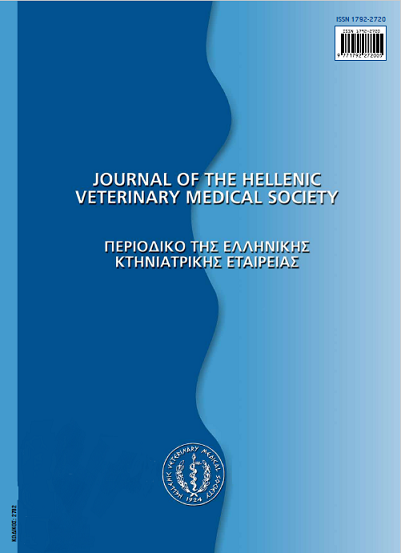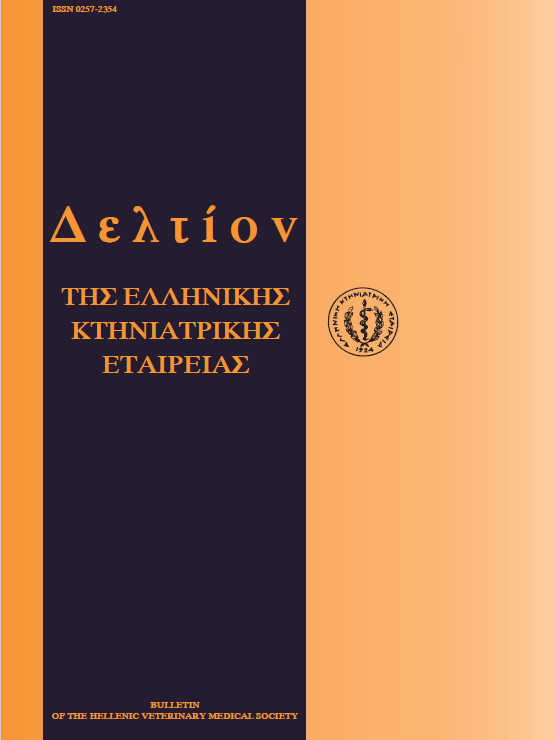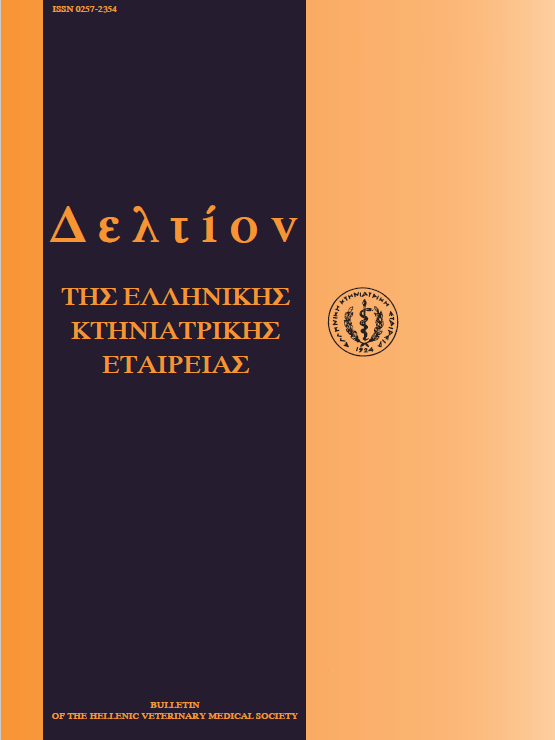Feline Coronavirus infections and feline infectious peritonitis
Abstract
Cats are susceptible to infection with several different strains of feline Coronavirus. Depending on the involved strain, clinical signs may range from asymptomatic infection to gastrointestinal disease or fibrinous serositis and disseminated vasculitis, commonly known as feline infectious peritonitis (FIP). Excretion of virus by infected cats into the environment occurs by faeces, oronasal secretions and urine. The feline coronaviruses are rapidly inactivated by most disinfectants. Clinical diagnosis of Coronavirus infection is made by evaluating the case history, physical findings, laboratory results, Coronavirus antibody titers and tissue biopsy. A temperature-sensitive feline infectious peritonitis virus vaccine has become available for healthy 16 week of age or older cats.
Article Details
- How to Cite
-
TZIVARA (Α. ΤΖΙΒΑΡΑ) A., & KRITAS (Σ.Κ. ΚΡΗΤΑΣ) S. K. (2018). Feline Coronavirus infections and feline infectious peritonitis. Journal of the Hellenic Veterinary Medical Society, 50(3), 199–205. https://doi.org/10.12681/jhvms.15710
- Issue
- Vol. 50 No. 3 (1999)
- Section
- Review Articles

This work is licensed under a Creative Commons Attribution-NonCommercial 4.0 International License.
Authors who publish with this journal agree to the following terms:
· Authors retain copyright and grant the journal right of first publication with the work simultaneously licensed under a Creative Commons Attribution Non-Commercial License that allows others to share the work with an acknowledgement of the work's authorship and initial publication in this journal.
· Authors are able to enter into separate, additional contractual arrangements for the non-exclusive distribution of the journal's published version of the work (e.g. post it to an institutional repository or publish it in a book), with an acknowledgement of its initial publication in this journal.
· Authors are permitted and encouraged to post their work online (preferably in institutional repositories or on their website) prior to and during the submission process, as it can lead to productive exchanges, as well as earlier and greater citation of published work.

